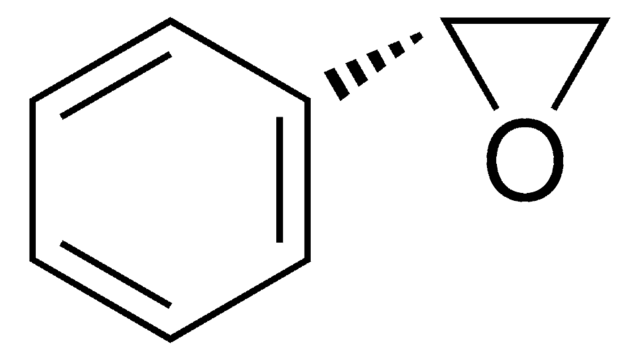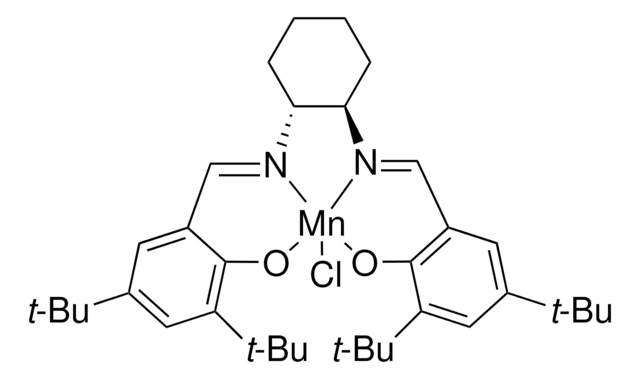726508
(R)-(+)-Styrene oxide
ChiPros®, produced by BASF, ≥98%
Synonyme(s) :
(R)-(+)-Phenyloxirane, (R)-Phenylethylene oxide
About This Item
Produits recommandés
Qualité
produced by BASF
Niveau de qualité
Pureté
≥98%
≥98.0% (GC)
Forme
liquid
Pureté optique
enantiomeric excess: ≥98.0%
Limite d'explosivité
~22 %
Indice de réfraction
n20/D 1.534 (lit.)
Point d'ébullition
89-90 °C/23 mmHg (lit.)
Densité
1.051 g/mL at 25 °C (lit.)
Groupe fonctionnel
ether
phenyl
Chaîne SMILES
C1O[C@@H]1c2ccccc2
InChI
1S/C8H8O/c1-2-4-7(5-3-1)8-6-9-8/h1-5,8H,6H2/t8-/m0/s1
Clé InChI
AWMVMTVKBNGEAK-QMMMGPOBSA-N
Vous recherchez des produits similaires ? Visite Guide de comparaison des produits
Informations légales
Mention d'avertissement
Danger
Mentions de danger
Conseils de prudence
Classification des risques
Acute Tox. 4 Dermal - Carc. 1B - Eye Irrit. 2
Code de la classe de stockage
6.1C - Combustible acute toxic Cat.3 / toxic compounds or compounds which causing chronic effects
Classe de danger pour l'eau (WGK)
WGK 3
Point d'éclair (°F)
176.0 °F - closed cup
Point d'éclair (°C)
80 °C - closed cup
Faites votre choix parmi les versions les plus récentes :
Certificats d'analyse (COA)
Vous ne trouvez pas la bonne version ?
Si vous avez besoin d'une version particulière, vous pouvez rechercher un certificat spécifique par le numéro de lot.
Déjà en possession de ce produit ?
Retrouvez la documentation relative aux produits que vous avez récemment achetés dans la Bibliothèque de documents.
Articles
There are several alternative routes towards chiral aryl-substituted epoxides, among them Jacobsen’s asymmetric epoxidation1 or his hydrolytic kinetic resolution2 method, Sharpless’s asymmetric epoxidation3 using catalytic titan(IV)- isopropylate/diethyl tartrate complexes and tert-butylhydroperoxide
Notre équipe de scientifiques dispose d'une expérience dans tous les secteurs de la recherche, notamment en sciences de la vie, science des matériaux, synthèse chimique, chromatographie, analyse et dans de nombreux autres domaines..
Contacter notre Service technique









